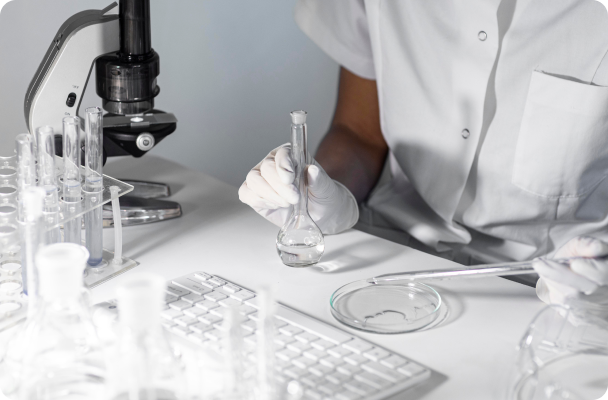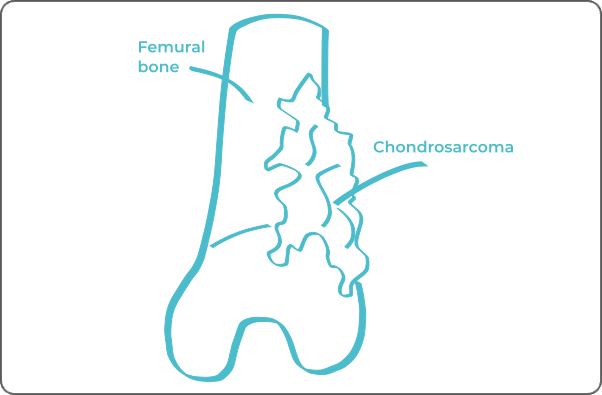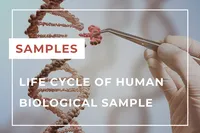Home › Biological sample › Cancer › Sarcoma
Sarcoma biological samples
For research applications
The development of drugs and diagnostic tests for the treatment and detection of sarcoma requires conducting studies on biological samples obtained from patients with sarcoma.
A brief overview of various types of sarcoma and how the services offered by Labtoo contribute to accelerating research and development projects in the pharmaceutical industry.


Are you looking for biological samples from sarcoma patients?
What are sarcomas?
Sarcomas represent a category of rare cancers emerging from connective tissue, including bones, muscles, tendons, and blood vessels. Their complexity is reflected in a diversity of subtypes, each presenting specific histological and genetic characteristics. Although sarcomas constitute a limited proportion of cancer cases, they demand precise diagnostic and therapeutic approaches, underscoring the importance of a thorough understanding of their biological mechanisms and the ongoing exploration of targeted therapeutic strategies.
There are two major categories of sarcomas : soft tissue sarcomas and bone sarcomas.
Soft tissue sarcomas
More prevalent than bone sarcomas, encompass a diverse range of cancers that develop within the body's connective tissues, including muscles, tendons, adipose tissue, as well as blood vessels.
Subclassification can be made by distinguishing specific sites of origin, as seen in gastrointestinal stromal tumors (GISTs). GISTs are tumors of the digestive tract arising from connective tissue cells, primarily Cajal cells.
Bone sarcomas
Bone sarcomas are malignant tumors that develop within bones. These cancers typically originate from mesenchymal cells.
Bone sarcomas can affect any bone in the body, but they often tend to occur in long bones, such as the femur or tibia.
There are several types of bone sarcomas, each arising from distinct bone cells.
| Sarcoma Class | Sarcoma Subclass | Cell of Origin |
|---|---|---|
| Soft Tissue Sarcoma | Liposarcoma | Adipose Cells |
| Soft Tissue Sarcoma | Fibro-Myofibroblastic Sarcoma | Fibrous, Tendinous, and Ligamentous Tissues |
| Soft Tissue Sarcoma | Muscular Tissue Sarcoma | Smooth and Skeletal Muscles |
| Soft Tissue Sarcoma | Vascular Sarcoma | Blood Vessels or Lymphatics |
| Soft Tissue Sarcoma | Nervous Tissue Sarcoma | Nerve Cells |
| Soft Tissue Sarcoma | Gastrointestinal Stromal Tumor | Gastrointestinal Connective Tissue Cells |
| Bone Sarcoma | Osteosarcoma | Bone Tissue |
| Bone Sarcoma | Chondrosarcoma | Cartilage Cells |
| Bone Sarcoma | Ewing Sarcoma | Primitive Bone Cells |

Sarcomas have the potential to metastasize to other parts of the body from their primary site. The likelihood of this spread, termed metastasis, depends on the particular type of sarcoma, with some being more prone to metastasize than others. Common sites for sarcoma metastasis include the lungs, liver, bones, and other soft tissues.
Explore Labtoo's Service for Your Biological Sample Research
Labtoo assists you in sourcing biological samples from sarcoma patients. Our team manages the entire project of transferring biological materials from inception to sample delivery.
- Feasibility assessment of sample availability or clinical collection from referenced clinical centers
- Validation of regulatory aspects
- Establishment of a contractual framework
- Dispatch of desired samples under appropriate conditions
- Transfer of associated clinical data
- Additional analytical and experimental services
Types of available samples
Fresh tissues
After a tumor resection or a biopsy, a pathologist can decide whether the tissue sample can be used for research. Labtoo can organize the conditioning and shipment of fresh sarcoma tissue in 24-48 hours after surgery.
Frozen tissues (OCT and FF)
Similarly to fresh tissue, once the tissues are cleared for research, the clinical site can freeze and keep the frozen sarcoma tissue samples at -80°C or in liquid nitrogen for ulterior use.
FFPE Tissues
Pathologists typically embed the biopsies and resections in paraffin. FFPE blocks of sarcoma tissues can be used later for research.
Adjacent Healthy Tissues
Tumor resections typically include healthy adjacent tissue during the process. This tissue can later be used for research and act as controls for diseased tissues.
- Plasma or Serum from sarcoma patients
- PBMC (Peripheral Blood Mononuclear Cells)
- Whole Blood
- Leukapheresis
- Urine
- Feces
- Other
Typical associated clinical data
-
- Age
- Gender
- Ethnicity
- TNM Classification
- Undergone Treatment
- Medical Imaging
- HIV/HBV/HCV status
- Mutations
- Other Data (upon request)

Labtoo identifies clinical sites that can prepare and transfer sample collections tailored to your specific project needs.
Contact our team to discuss your project.
Send your request to our team:
The stages and grades of sarcoma
The stage and grade of cancer are commonly used together to provide a comprehensive assessment of the disease and guide optimal treatment.
The determination of the cancer stage primarily relies on the TNM classification, which evaluates the tumor size (T), involvement of lymph nodes by cancer cells (N), and presence of metastases in other parts of the body (M). In parallel, the grade provides an indication of the degree of differentiation of cancer cells.
Regarding grades, graded from 1 to 3, grade G1 indicates well-differentiated cells resembling normal cells, grade G2 represents moderately differentiated cells, and grade G3 indicates poorly differentiated cells, suggesting faster and potentially more aggressive growth.
Regarding the stages of sarcomas, they differ whether they are soft tissue or bone sarcomas:
Stages of soft tissue sarcomas
Stage I A
The tumor is 5 cm or less in size and is graded as low grade.
Stage I B
The tumor exceeds 5 cm in size and is graded as low grade.
Stage II
The tumor measures 5 cm or less but is graded as high grade.
Stage III A
The tumor measures between 5 and 10 cm and is graded as high grade.
Stage III B
The tumor exceeds 10 cm in size and is graded as high grade.
Stage IV
The tumor has metastasized to other parts of the body or reached neighboring lymph nodes.
Stages of bone sarcomas
Stage I A
The tumor, measuring 8 cm or less, is characterized as low grade.
Stage I B
The tumor, exceeding 8 cm, is in multiple parts of the same bone while maintaining its low-grade nature.
Stage II A
The tumor, measuring 8 cm or less, exhibits high grade.
Stage II B
The tumor, exceeding 8 cm, is high grade.
Stage III
The tumor is present in multiple parts of the same bone and is high grade.
Stage IV
The cancer has metastasized to other parts of the body.

Rare forms of sarcoma
Rare forms of sarcoma can occur, among them are:
-
Kaposi's Sarcoma
This is a rare cancer that forms in the cells of lymphatic and blood vessels. It differs from others as it can appear in multiple areas of the body simultaneously.
-
Soft Tissue Ewing Sarcoma
A rare variant of Ewing sarcoma, it originates not in the bone but in the soft tissues surrounding the bone.
-
Clear Cell Sarcoma
A distinctive sarcoma due to its clear appearance under the microscope, it typically originates in tendons and tends to spread rapidly to nearby lymph nodes.
Sarcoma treatments and advances
The treatment of sarcoma is highly individualized, depending on the specific type of sarcoma, its stage, and the patient's physical condition. Primary therapeutic modalities include surgery, radiotherapy, chemotherapy, and, in some cases, targeted therapies.
-
Surgery: Surgery is commonly recommended aiming for the excision of the tumor with a margin of healthy tissue in all directions, thus minimizing the risk of tumor residues.
-
Radiotherapy: The use of radiation to suppress tumor cells is frequently indicated, especially in cases of stage 2 or 3 soft tissue sarcoma. It can be administered before or after surgery, and in the absence of surgical options, it can be used as monotherapy or in combination with chemotherapy.
-
Chemotherapy: Chemotherapy, aimed at reducing the risk of recurrence or shrinking the tumor size, is often recommended for stage 2 or 3 sarcomas. It can be administered before or after surgery, alone or in combination with radiotherapy.
-
Targeted Therapies: These drugs specifically target abnormalities present in cancer cells, aiming at identified genetic mutations. In specific cases, such as gastrointestinal stromal tumors (GISTs) or dermatofibrosarcoma, targeted therapy may be used to target kinases responsible for cell division.
The use of immunotherapy to treat sarcomas is not yet widely spread, although clinical studies are ongoing to evaluate its potential effectiveness.




